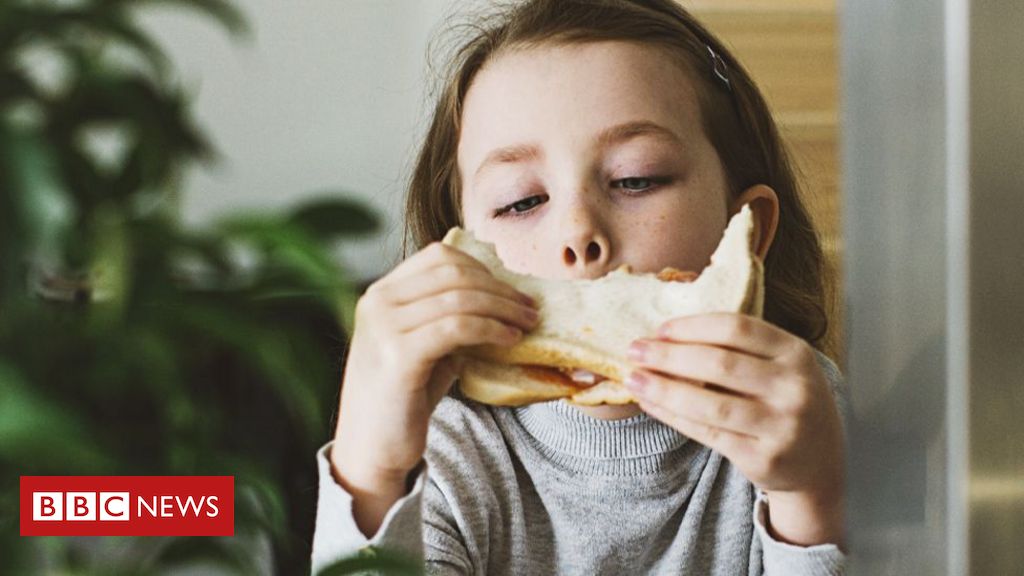

credit, BBC/Kevin Church
Scientists are trying to create a new type of bread that is as healthy as wholemeal bread, but looks and tastes like white bread.
The project targets white bread lovers and is funded by the UK government to increase the health benefits of the food in the country.
The researchers plan to add small amounts of peas, grains and cereals to bread dough, in addition to the bran and wheat germ, which are usually removed from white flour.
Bread makers have tried to make white bread healthier in the past by adding wheat bran to the flour, but consumers didn't like the taste or texture.

The research project is still in the early stages of development.
Catherine Howarth, from Aberystwyth University, in the UK, is one of the project leaders. She said the scientists have begun to analyse the detailed chemical composition of the white flour found.
According to her, increasing the nutritional value to the level of whole wheat bread, while at the same time maintaining the flavour and feel of white bread, is a delicate balancing act.
This includes adding smaller amounts of wheat germ, part of the bran that is removed in the milling process, as well as adding other grains that are rich in vitamins, minerals and fibre, such as quinoa, teff, sorghum and millet. Peas and chickpeas will provide additional protein.
“We want to know exactly what vitamins and minerals we lose during the milling process,” she explains.
“By using other grains, we can increase the levels of iron, zinc, vitamins and, most importantly, the fibre content, because white bread has very little fibre, which is very important for health.”
Once Howarth comes up with some potential recipes, Chris Hollister, product development manager at Gloucestershire flour maker Shipton Mill, will turn them into bread.
“Most people know that wholemeal bread is better, but many are put off by the taste, or it’s not what they’re used to, and they’re simply not interested in it,” he says of the challenge.
The final step will be to test the new bread with consumers to see if they can tell it apart from the white bread slices sold in supermarkets.
Hollister used me as a guinea pig to sample an early prototype made from a mixture of plain white flour with some added grains and peas.
It was crispier than the white bread you buy at the supermarket – but otherwise it looked and tasted like white bread.
However, there is a lot of work to be done.
The new product is expected to be available on supermarket shelves in about two years.

credit, BBC/Kevin Church
The research team believes their approach will be successful because they are only adding the inner bran layer, which has a less intense flavour and colour. They say they will need to add less because they are using other grains that are more nutritious but have a less intense flavour.
White bread must have added minerals and vitamins by law to make up for the benefits lost in the refining process. But Amanda Lloyd, who works with manufacturers Howarth and Holister, believes that using natural ingredients would make sliced white bread healthier.
“If the nutritional quality of standard staple bread is improved, people’s quality of life, health and well-being will improve,” Lloyd points out.
Tim Lang, professor of food policy at City University of London, who was not part of the research team, says the work could be an important step towards improving people's health.
“The British have had a love affair with white bread for more than a century, and nutritionists have been trying to get more people to eat whole grains,” he says.
“The new research seems to be a very interesting approach to doing this.”
“Critics might say this is a trick for people to improve their diet, but nutritionists might say it doesn’t matter how it’s done – what matters is that people are using it to improve their health!”
“But it remains to be seen whether this new approach will succeed,” he adds.
According to the BDA, research shows that 95% of adults don't eat enough whole grains — and about one in three don't consume any.
It wasn't always this way, according to Chris Hollister.
“Before, white bread was reserved for the upper class, because it was a refined product, and much more expensive than whole grain bread. This made everyone want white bread, because it seemed to have a certain status.”
“Then some people changed again, and went the other way, when research showed that (whole grain bread) was more nutritious.”
But Chris doesn't think the cycle will close, because so many people are used to eating white bread.
“White bread is much cheaper than whole wheat because companies are equipped to produce it. It's also what most people are used to.”

“Friendly zombie guru. Avid pop culture scholar. Freelance travel geek. Wannabe troublemaker. Coffee specialist.”






